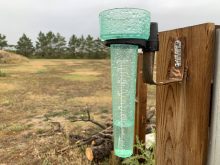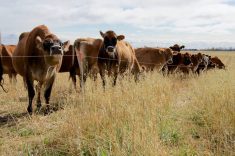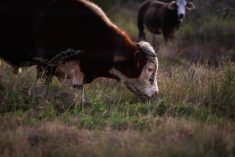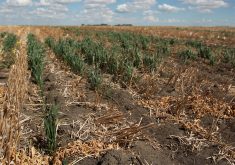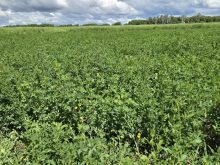The grazing season has had some memorably bad starts in recent years, but 2024 won’t likely be one of them.
Producers had a better feed buffer last fall. In 2022, for example, turnout was hindered by the double whammy of a cold, wet spring and the lingering impacts of the 2021 drought on feed supplies and pasture regrowth.
In comparison, 2023’s ending feedstocks were in decent shape.
Read Also
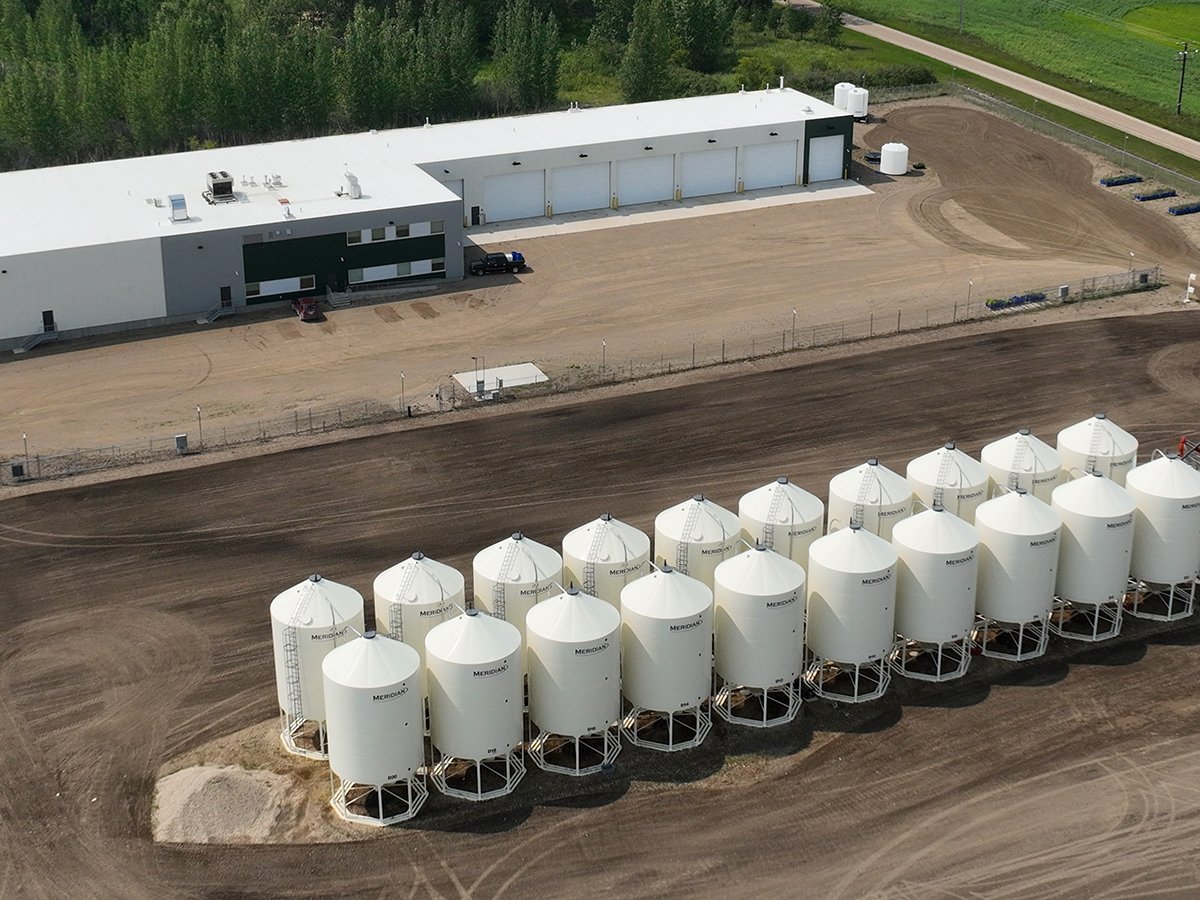
Saskatchewan firm aims to fix soil with compost pellets
In his business, Humaterra, Leon Pratchler is helping farmers maximize yields in the weakest areas of their fields through the use of a compost pellet.
“We got rains last fall that allowed cattle to do some late fall grazing,” said John McGregor, forage expert and extension support with the Manitoba Forage and Grassland Association.
That extended grazing was a boon for farmers who dealt with dry conditions last summer. Hay yields were spotty in 2023. Producers had to rely on patchy thunderstorms to water pastures and hay stands that, in some areas, were in their fourth year of drought or more.
A mild winter offered another break because livestock didn’t need extra calories to stay warm.
“(Producers) didn’t use up as much of the feedstocks as we would normally see in a normal Manitoba winter,” McGregor said. “In most cases, we are seeing producers with a slight surplus of feed on hand right now.”
That’s the situation for Interlake producer Mike Duguid. A feed surplus has been key, since pastures in his area north of Gimli came in very slowly.
“We were short of snow all winter and the ground froze, so the melt in the spring ran off instead of soaking in the ground,” he said.
April and May have given the Prairies a much-needed drink. Those rains have helped and he’s starting to see things green up.
“It’s taking time to get the frost out of the ground up here,” said Duguid, who serves on the boards of both MFGA and Manitoba Beef Producers.
Seeding in his area is considerably behind other regions of the province, he noted, “and, of course, we’re right against the lake here, which has a cooling effect too.”
Nevertheless, he has all his cattle on pasture already.
“It’s not for grass. It’s just to get them out in the field. We’re still feeding out from those pastures that the cows are on because there is no grass yet.”
He’s not alone in that. Producers want to get cattle out of muddy winter pens as soon as possible, he noted, and many producers also move their herds before the pasture is technically ready and will feed until the grass catches up.
Overall, McGregor said he’s cautiously optimistic about the pasture outlook.
“We’re somewhere between 75 and over 100 per cent of normal rainfall for April and May, which is a very good sign,” he said. “But we’re going to need more rain to help replenish the soil moisture that we were seeing depleted from five years of dry or drought conditions, depending on where you were in Manitoba.”
It’s still a bit early and cold to see major growth spurts on pastures.
“When I look at the growing degree days, we are above normal right now in almost all of the province,” he said, adding that a few days of sustained warmth will quickly improve the picture.
“If it turns around and we finally get some of that plus-20 stuff that we were getting … we’re going to see that grass just jump.”
Forage experts have repeatedly warned producers this spring not to jump the gun on pasture turnout.
“We’ve seen a lot of guys this past week take their cows out to pastures, and the plants are just not ready for grazing,” Manitoba Agriculture livestock specialist Pam Iwanchysko said in mid-May. “It’s a practice that we do not recommend.”
She said she understands the desire to get cattle out of pens or winter feeding areas. But if producers rely on early grass to meet the animals’ feed needs, they’re taking days off the feeding season on the back end.
“They definitely need supplemental feeding for those cows on pasture,” she said. “I’d maybe advise them to fence off a certain area of that pasture and name it the ‘sacrifice piece’ for this spring.”
Manitoba Agriculture forage and livestock specialist Shawn Cabak puts the ideal turn out stage for pastures at three to four leaves of regrowth and about six inches tall. Before that, he warned, livestock nutritional needs will not be met.
“If livestock are turned out too early, forage production will be reduced and plants and roots will be less healthy. We need enough leaf material for photosynthesis and to allow root recharge.”
Toxic plants are another danger of premature turnout. Hungry cattle with few grazing options may eat plants they normally wouldn’t.
“There’s a natural instinct not to graze something like a chokecherry bush that’s toxic to them, but if they have to, they will do so to try to sustain themselves,” warned Iwanchysko.




